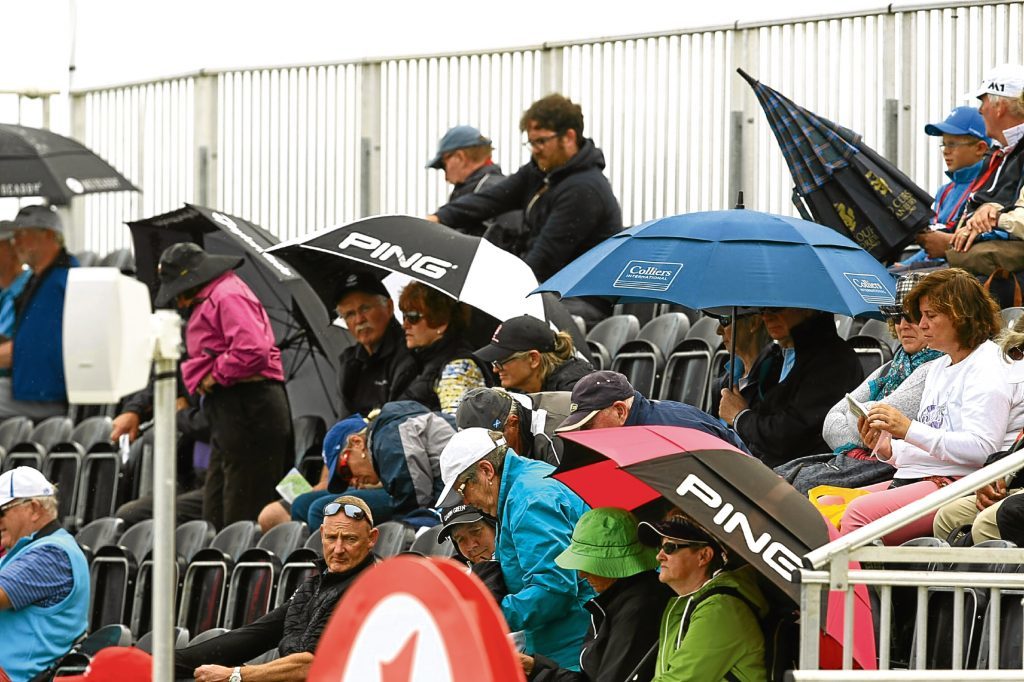You get used to it on the golf tour. From June to the end of August, it’s pretty much full on.
It’s high season in golf, in what used to be high summer. In July in particular, it’s one event after another.
In 2018 it’ll be crazy. In Scotland, from June we have the Amateur at Royal Aberdeen, Scottish Hydro Challenge at Aviemore, Scottish Boys and Girls Championships, Aberdeen Asset Scottish Open at Gullane, Open at Carnoustie, Senior Open at St Andrews (or Scottish Ladies Open at Gullane the same week) and Scottish Amateur.
You understand why tradition has it that so many golf events are crunched into these eight weeks or so – holidays, summer weather, and the rest. Only the evidence of the last few weeks suggests that July is no longer high summer; it actually might be now.
Golf has of course announced plans to juggle its schedule with the PGA Championship moving to May and the BMW PGA Championship switching to September in 2019.
There’s obvious logic at work here. The PGA, for a host of reasons (many to do with weather in the US in early August) is better off in May. The BMW switches to a month which has been roundly ignored but for the team golf competitions.
I’m very much of the opinion that other events should switch to August or September as well. The Senior Open has no business being the week after The Open (only a handful play in both championships these days) and would benefit in moving away from the log-jam in July.
The Open could even do with moving a week or two further forward in the schedule.
Move the Open? Yes, before you all get out the pitchforks and torches and form a horde to hang me from the nearest tree, I should point out the it’s only since the mid-1970s that the Open has been in this “sacrosanct” time slot in mid-July.
Before that it was always the first week in July, and for nearly 50 years before that it was in June.
Now that it’s going to be the final major of the season, they’re surely room for making things easier for everyone involved in golf – players, fans and those attached to the game – and working some breathing room.
Things change. The climate is changing, and if my experience is anything to go by July is now becoming the rainy – if not monsoon – season in Northern Europe.
Some more flexible thinking on the schedule may be to the benefit of us all.
A brave admission of failure
Flexible thinkers are to be encouraged, and foremost in golf at present is Keith Pelley, the colourful and proactive chief executive of the European Tour.
Last week Pelley took the unprecedented step of shutting down the revamp of the European Tour’s website and returning it to its former design.
This would seem a small matter, and my personal frustrations with the website since it switched to the new, flashier version in May I assumed to be simply because the old version was a fantastic journalistic tool.
Nobody pretended it was the cutting edge of web design. But it had EVERY score from EVERY tournament ever played on the tour and the detailed record of EVERY player who had struck a ball. An amazing resource, like having a library in your pocket.
Anyway the reaction from players and fans at the new website showed that it wasn’t just us journos who depended on the website. Turns out it was adored as much by just about everyone, and the new version, while it looked splendid, had less than half the information while being more than five times more difficult to navigate.
Pelley, who had driven the change too quickly, admitted defeat last week. He also fronted up by making a personal statement about the retreat, which was a brave and correct thing to do.
The Canadian won’t get it right all the time. But when he gets it wrong, he has the guts to admit it.
Payne left one thing undone
I don’t much like that Augusta National Golf Club has assumed a position of great authority in golf largely by it’s own insistence, but if it’s going to happen, one hopes they have more chairmen like the retiring Billy Payne.
Payne dragged ANGC into the 21st century, not just through piloting women members into the club.
The club have also reached out in a number of initiatives beyond its own fences. None of them are earth shattering, it’s true, but Augusta now has a public face it never had in the past.
The one thing Payne didn’t do? We really need a Women’s Masters. Nothing would do the inclusiveness of our game more good.
A proper man of golf
Peter Lloyd, for years secretary and many more synonymous with the PGA in Scotland, sadly died at the weekend.
Weekend after weekend, at club pro ams up and down the country, Peter was the avuncular public face of the professional game in Scotland.
His devotion to the game and the PGA members was unquestionable. Peter’s wise counsel will be missed by many.
